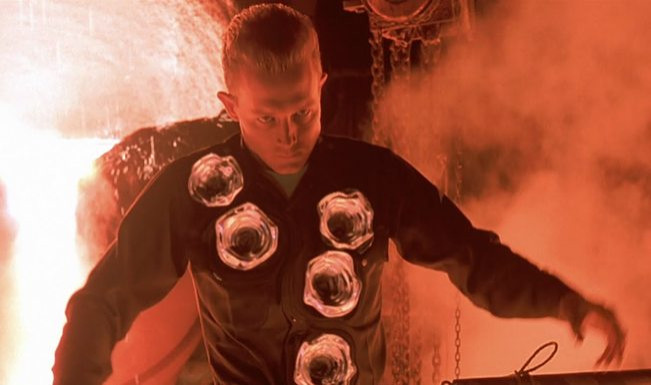Terminator-style self-healing material created by Nasa and Michigan scientists

A Terminator-style self-healing material that can repair itself in seconds has been created by scientists from Nasa and the University of Michigan. The team say the material could one day be used to protect spaceships from potentially devastating space debris by quickly fixing any damage caused.
Their findings were published in the American Chemical Society's Macro Letters, along with a video of the material repairing itself after being shot with a bullet. In the film, the bullet moves through the material, which is made up of two layers of a solid polymer with a special liquid sandwiched in-between. "The damage allows the liquid to mix with oxygen from the air and turn into a solid plug," the film notes. In another clip, the material is shown fixing a small hole in less than a second.
The reactive liquid – a liquid resin known as thiol-ene-trialkylborane – flows into the entrance hole, at which point it contacts atmospheric oxygen and initiates polylmerisation. The authors used infrared spectroscopy to show the process, and found polymerisation starts immediately upon oxygen exposure.
"While other approaches for materials self-repair have utilised similar liquid-to-solid transitions, our approach permits the development of materials capable of sealing a breach within seconds, far faster than previously described methods," the team wrote.
The technology could be used to protect the International Space Station and other crafts from any space debris heading their way, researchers say. Debris travel at around 22,000 miles an hour and have the potential to cause huge amounts of damage. Currently, the ISS is protected by "bumpers" that vaporise debris before it hits the space station's walls. However, if these bumpers fail, the new material could serve as a backup safety measure.
"Further application-oriented development of this concept would afford load-bearing walls capable of autonomous healing after multiple projectile penetration events, preserving the atmosphere inside pressurised vessels such as manned spacecraft," they concluded.
© Copyright IBTimes 2025. All rights reserved.






















